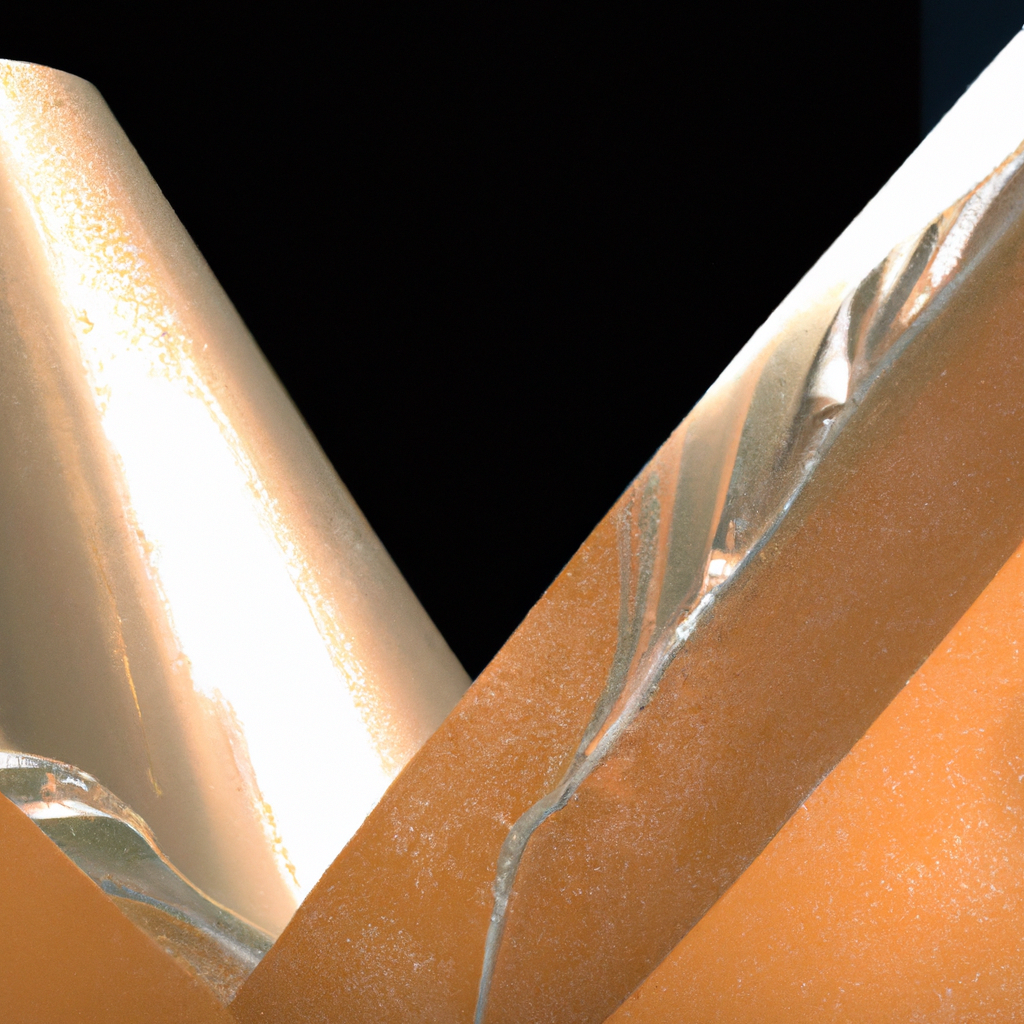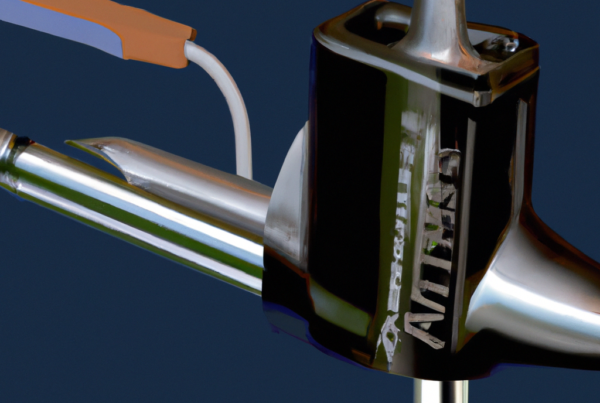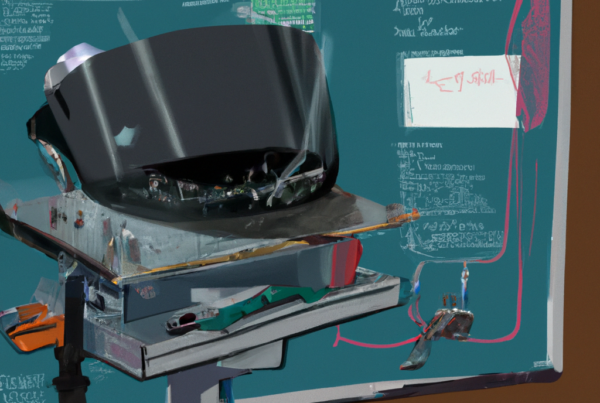Cold welds are an incredibly strong, reliable and cost-effective way of joining metal surfaces together. A cold weld is a process which uses pressure and heat to join metals without the use of a welding torch or other heat sources. This method is often used in applications that require high precision and strength, such as aerospace, automotive and medical components. Cold welds are especially useful in situations where traditional welding techniques are not suitable, as the process does not require any additional materials or tools, making it fast and cost-effective. Cold welds are also highly reliable and are often used in critical applications, as the strong bond produced is not easily affected by extreme temperature changes.

What is Cold Welding?
Cold welding is a process of joining two pieces of metal without the use of heat or filler material. It is a solid-state welding process that uses pressure and electrical current to form a strong bond between two pieces of metal. Cold welds are used in a variety of applications where a strong, reliable joint is required.
Cold welding works by applying pressure and an electric current to the two pieces of metal. The current causes the surfaces of the metals to become very hot, while the pressure causes them to come into contact with each other. The heat and pressure cause the atoms of the two metals to diffuse together, forming a strong bond.
Cold welds are often used in the automobile and aerospace industries, due to their strength and durability. Cold welds are also used in jewelry making, medical device manufacturing, and many other applications. Cold welds offer several advantages over traditional welding processes, including:
- The process is faster and less expensive than traditional welding.
- The joint is strong and durable.
- The process does not require flux or heat.
- The process does not produce toxic fumes or sparks.
Cold welding is a reliable and cost effective way of joining two pieces of metal. The process is ideal for applications where a strong, durable joint is required. Cold welding is becoming increasingly popular in the automotive and aerospace industries, due to its many advantages.
What is the Difference Between Cold Welding and Hot Welding?
Cold welding and hot welding are two of the most common welding processes used in industry today, and while they may seem similar, they have several key differences.
Cold welding is a process that uses pressure to bond two pieces of metal together without the use of heat or filler material. It is used to join two pieces of the same metal together, and can be done with a variety of metals such as steel, aluminum, and copper. Cold welds are usually stronger than hot welds and are used in applications that require a high degree of corrosion resistance.
Hot welding, on the other hand, is a process that uses heat and/or filler material to bond two pieces of metal together. It is used to join two pieces of different metals together, such as steel and aluminum, and is typically used in applications that require a high degree of strength or a neat finish. Hot welds are usually weaker than cold welds, but are easier to control and can be done with a variety of metals.
In summary, cold and hot welding are two of the most common welding processes used in industry today, and while they may seem similar, they have several key differences. Cold welding relies on pressure to join two pieces of the same metal together, while hot welding uses heat and/or filler material to join two pieces of different metals together. Cold welds are usually stronger than hot welds, while hot welds are easier to control.
What are the Advantages of Cold Welding?
Cold welding, also known as solid-state welding, is a bonding technique that is used to join two or more metals without the need for heat or pressure. This type of welding offers a number of advantages over traditional welding, including:
- No need for additional equipment like flux, gas, or high temperatures.
- No need to pre-treat or clean the metal surfaces.
- No sparks, fumes, or smoke.
- No need to wear protective gear.
- High-quality welds with no porosity or other defects.
- Can be used to join dissimilar metals.
- Welds are strong and durable.
- Can be used in confined spaces.
Cold welding is an efficient way to join two or more metals, and is often used in a variety of industries, including aerospace, automotive, and electronics. It is also an excellent choice for repairs and maintenance, as it requires minimal setup and can be used in most environments.
What are the Disadvantages of Cold Welding?
Cold welding, also known as contact welding, is a process in which two similar metals are joined together at room temperature without the use of heat or any additional materials. This process is relatively simple and cost-effective, but it does not always lead to the desired outcome. Here are some of the disadvantages of cold welding:
- It is only suitable for very low-stress applications, as the weld strength is not as strong as that of a weld made with heat.
- The metals must have similar properties in order for the weld to be successful, so it is not suitable for joining dissimilar metals.
- The process requires very precise alignment of the two surfaces in order to achieve a good weld.
- The weld surfaces must be free of any contamination, as even a small amount of grease or oil can prevent the weld from forming properly.
- The process is not suitable for larger components, as the contact pressure required to successfully join the two surfaces can be too high.
Overall, cold welding can be a useful process for joining two pieces of metal, but it’s important to consider these potential drawbacks before deciding to use it. It is also important to ensure that the metals to be joined have similar properties and that the surfaces are clean and free of contamination.
What Materials can be Cold Welded?
Cold welding, also known as solid-state welding, is a process that joins two pieces of metal together without melting them. Cold welding is a process that does not require an external source of heat or pressure, and it results in a strong, permanent bond. Cold welding is used extensively in the aerospace, automotive, and medical industries.
The materials that can be cold welded together include:
- Aluminum alloys
- Brass
- Bronze
- Copper
- Magnesium alloys
- Nickel alloys
- Platinum
- Steel alloys
- Titanium alloys
Cold welding is most effective when the two pieces of metal are very clean and free of any surface contaminants. Any dirt, oil, or other contaminants will prevent the two pieces from forming a strong bond. The metals must also be in close contact with each other; any air gaps will prevent the weld from forming.
Cold welding is not suitable for joining dissimilar metals, as it can cause corrosion or cracking. It is also not recommended for use in applications that require a high degree of flexibility, as the welds are not as flexible as those created with traditional welding techniques.
What are the Different Types of Cold Welding?
Cold welding is a process that bonds two metals together without the use of heat or traditional welding techniques. It is also known as solid-state welding or diffusion welding. There are several types of cold welding, each with its own advantages and disadvantages.
The four main types of cold welding are:
- Friction welding
- Ultrasonic welding
- Explosive welding
- Brazing and soldering
Friction welding is a process where two metal surfaces are brought together and then moved in a rotational or linear motion. This motion creates friction which generates heat and causes the metals to fuse. Friction welding is commonly used to join two pieces of metal together.
Ultrasonic welding is a process where two metal surfaces are brought together and then exposed to high-frequency vibrations, which cause the metals to fuse. Ultrasonic welding is commonly used in the automotive and electronics industries.
Explosive welding is a process where two metal surfaces are brought together and then exposed to a high-energy explosive, which causes the metals to fuse. Explosive welding is commonly used in the aerospace, military and construction industries.
Brazing and soldering are processes where two metal surfaces are brought together and then exposed to a filler material, which bonds the two metals together. Brazing and soldering are commonly used in the plumbing and electronics industries.
Each type of cold welding has its own advantages and disadvantages, so it is important to choose the right type for the job. The type of cold welding that is best suited to a particular application will depend on the specific requirements of the project.
What is the Process for Cold Welding?
Cold welding is a process where two pieces of metal are joined together without using any heat or an external energy source. It occurs when two clean, smooth, and perfectly aligned surfaces are placed together and a force is applied. This force causes the atoms of each surface to interlock and form a strong bond. The following are the steps for cold welding:
- The surfaces of the two parts should be clean, smooth, and perfectly aligned.
- A force is applied to the two parts, causing the atoms to interlock.
- The force is maintained until a strong bond is formed.
Cold welding is a reliable and cost-effective process, and it is used in many industries, such as automotive, aerospace, and electronics. It is also used to manufacture high-precision components, such as medical implants and watch components, which require a strong bond without introducing any heat to the parts.
What are the Safety Considerations for Cold Welding?
Cold welding is a process that involves joining two pieces of metal without the use of heat, pressure, or a filler material. This process is often used in the manufacturing of parts and components that must be extremely strong and have excellent corrosion resistance. While cold welding has a number of advantages, there are several safety considerations that must be taken into account.
One of the primary safety considerations when using cold welding is the risk of electric shock. As cold welding relies on electric current to join the two pieces of metal, there is a risk of electric shock if the equipment is not properly grounded. Therefore, all equipment used for cold welding should be properly grounded and inspected for any potential problems before use.
In addition, the welding area should be correctly ventilated to ensure that no hazardous fumes are released into the air. The use of personal protective equipment is also essential when carrying out cold welding, as it can protect the eyes and skin from the fumes, sparks, and other hazards associated with the process.
Finally, it is important to ensure that the work area is kept clean and tidy to avoid any potential accidents or injuries. All debris and particles should be removed from the area before any welding takes place, and any tools or materials should be kept away from the welding area.
What are the Applications of Cold Welding?
Cold welding is a process in which two metal surfaces are joined together without the application of heat. It is a solid-state welding process that can be used to join dissimilar metals. It is a process that has a wide variety of applications in many industries.
The applications of cold welding include:
- Joining of dissimilar metals
- Welding of pliable metals
- Joining of thermoplastics
- Joining of rigid plastics
- Welding of thin sheet metal
- Joining of thin-walled pipes
- Welding of wires and cables
- Joining of medical components
Cold welding is also used in the fabrication of aircraft, automobiles, and other transportation vehicles. It is also used in the production of electronic components, medical devices, and other types of industrial equipment. In addition, it is used for the repair and maintenance of structures and other components.
Cold welding is a process that has numerous advantages over traditional welding methods. It is a fast and efficient process that is able to produce strong, reliable welds. It is also a clean process that does not require the use of flux or other hazardous materials. Furthermore, cold welding does not require the preheating of the metals, which reduces the potential for distortion and other problems.
What are the Future Developments in Cold Welding?
Cold welding, also known as solid-state welding, is a welding process that does not involve the use of an external heat source. This type of welding is becoming increasingly popular in a variety of industries due to its high efficiency, low cost, and environmental friendliness. In the coming years, there are a few major developments that can be expected in the field of cold welding:
- The development of advanced cold welding technologies, such as magnetic pulse welding, will enable the welding of materials that are difficult to weld with conventional methods.
- The use of new alloys and materials, such as titanium alloys and composites, will expand the range of materials that can be welded using cold welding.
- The development of automated cold welding systems, which can reduce labor costs and increase productivity.
- The development of robotic cold welding systems, which can improve accuracy and reduce the risk of human error.
- The development of new techniques, such as laser welding, to facilitate welding in hard-to-reach areas.
These developments will help to increase the efficiency and cost-effectiveness of cold welding, making it an increasingly attractive option for use in a variety of industries.



